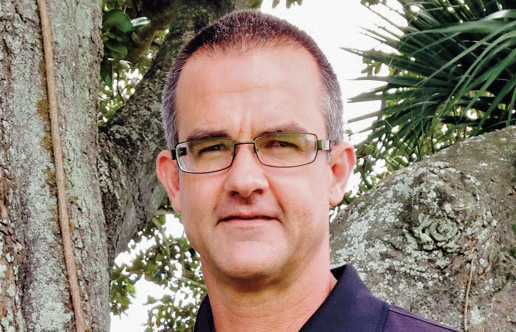Getting To The Root Of Good Soil Health Requires Some Digging
Four Questions With Dave Gilliam, regional sales manager for Horticultural Alliance
 1. Have you observed citrus growers turning more attention to root health in recent years?
1. Have you observed citrus growers turning more attention to root health in recent years?
Gilliam: Absolutely! In past years prior to HLB and canker, trees could be grown chemically with great success with little to no concern of soil health. This could be done with little regard to a tree’s natural ability to fight disease as well. Most natural defenses start on a microbial level in the soil. Healthy soil = healthy roots and healthy roots = healthy trees. It seems that many growers are starting to realize the importance of truly healthy soils. I do not believe that we will ever get back to the days of growing free of chemicals, but there is no doubt as to the realization that microbes were created for a reason and that past growing practices have taken a serious toll on this invaluable part of the soil environment.
2. Are growers more willing to try new things in light of the onslaught of HLB?
Gilliam: Many growers still rely heavily on unnatural or chemical means of getting trees to production. However, the general consensus seems to be that we can really push these trees to the four-to five-year mark only to watch them quickly decline from HLB symptoms. This being said, most folks are desperate to find a way to get their trees beyond this point and are willing to try just about anything to do so.
3. How important is it to get new citrus plantings off to a strong start in the presence of HLB?
Gilliam: Of course, the answer to that question is very important. But, I think the real question should be: What is a really a strong start for citrus? There is no doubt the growing programs currently in place are producing some fine looking one- to three-year-old trees. I do not think it is possible to grow them any better at least as far as physical appearance is concerned. They look great. However, how strong are these trees really? In light of our current growing methods, is there a void in the systems plants require to naturally fight off disease for the long haul?
4. Anything else you would like to add?
Gilliam: As we move forward through the trials of HLB, I believe it extremely important we make a conscious decision not to overlook the importance of natural soil health. There is little argument that past agricultural practices have greatly compromised overall soil health of long term farmed land. There was great wisdom and council in times past of leaving grounds fallow. Since this is not always an option in our fast-paced society, there are products available to accomplish in a short time what it has taken nature years to do. This will — however — take some thinking outside the box, a willingness to try things not previously tried, and the knowledge that not all products labeled “biological” or “microbial” will accomplish exactly what you need them to. Mycorrhizae, bacillus, and trichoderma all serve their own different functions when it comes to soil health as well as other bio-stimulants that can increase their performance and vitality. The delivery packages and care of each of these is critical when it comes to how they will work for you. Soil health is by no means the silver bullet when it comes to dealing with HLB, canker, or whatever is to come, but we do believe it should be the foundation we can and will grow upon.









